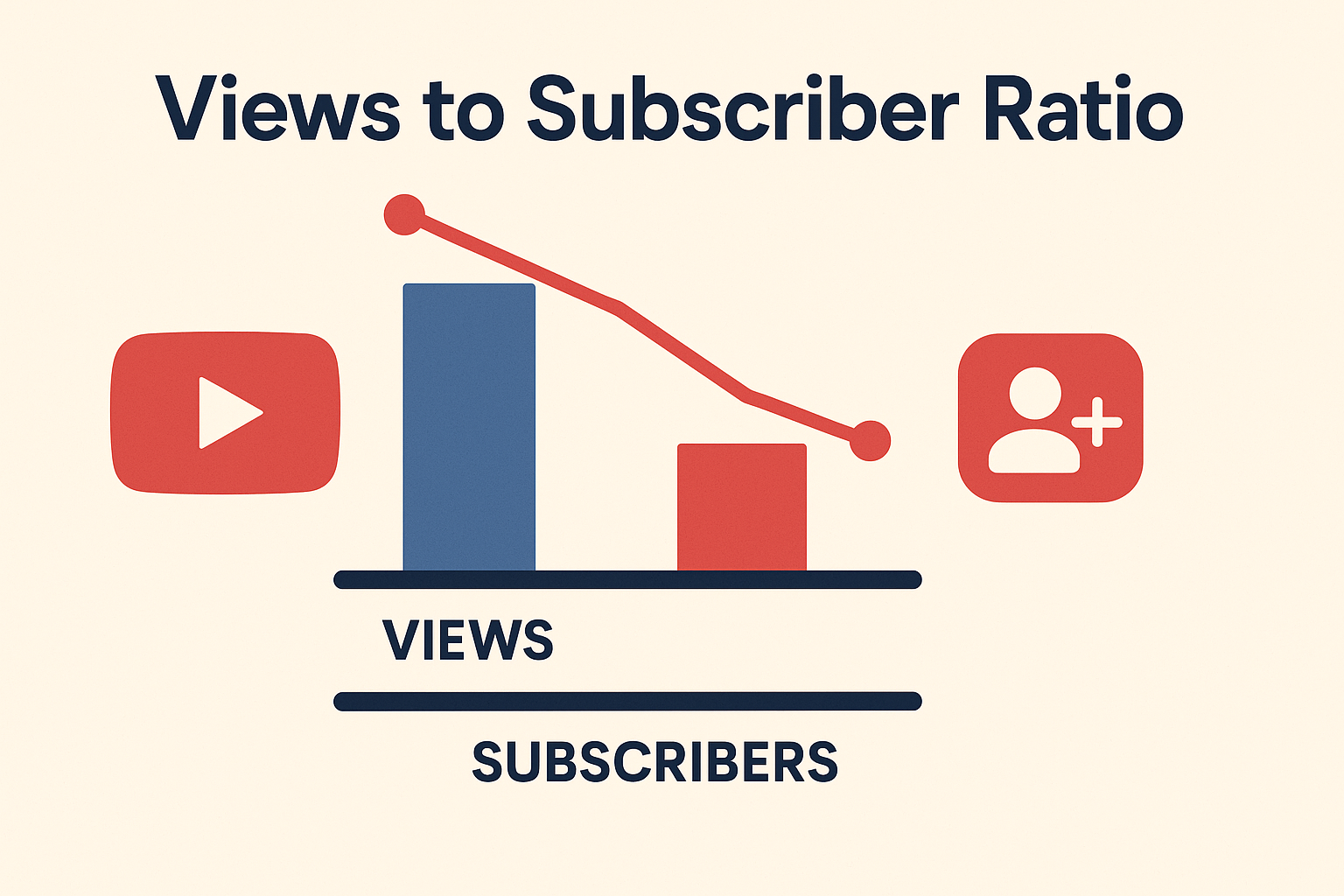Growing a thriving YouTube channel requires more than just uploading videos. One often-overlooked metric—the relationship between your content’s reach and your follower count—can reveal whether your strategy truly resonates. Let’s break down why this number matters and how to interpret it.
Imagine you’ve spent hours crafting a video, but only a small fraction of your followers watch it. This disconnect highlights why tracking engagement is critical. Experts suggest 8-14% is a healthy range for most creators, signaling your audience finds value in your work. Channels outside this range might need to rethink their approach.
This metric isn’t just about vanity stats. Platforms like YouTube prioritize content that keeps viewers coming back. A strong performance here can boost your visibility, helping you attract new fans while keeping existing ones hooked. It’s like a feedback loop: better engagement leads to more recommendations, which fuels growth.
Regularly monitoring this data helps creators spot trends. Are tutorials outperforming vlogs? Does your audience prefer shorter formats? Adjusting based on these insights ensures your channel evolves with your community’s preferences.
Key Takeaways
- A healthy engagement range for most channels falls between 8% and 14%
- Higher percentages signal content alignment with audience interests
- Consistent tracking helps identify content trends and opportunities
- Strong performance improves algorithmic visibility on YouTube
- Use this metric alongside other analytics for full-channel insights
Understanding YouTube Engagement Metrics
Behind every popular YouTube channel lies a web of meaningful data points. These measurements reveal how viewers connect with your work—and whether your content sparks real conversations. Let’s unpack the numbers that separate fleeting clicks from lasting community growth.
Defining Key Terminology
Engagement metrics act as your channel’s report card. The subscriber-to-view percentage shows how many followers consistently watch your videos. For example, channels with 100,000 followers typically see 12,000-15,000 views per upload.
Other vital stats include likes and comments. A healthy comments-to-views ratio sits around 0.5%—five responses per 1,000 views shows active participation. Likes should hit 4% (40 per 1,000 views) to signal broad appeal.
Importance of Audience Engagement
These numbers do more than stroke egos. Platforms prioritize content that keeps people interacting. Videos with strong metrics often appear in recommendations, creating a growth cycle where visibility fuels new discoveries.
Watch time and shares matter too. When viewers stick around for entire videos and pass them to friends, algorithms notice. This combo of quality and enthusiasm helps creators build loyal fanbases instead of passive watchers.
Mastering the Views to Subscriber Ratio
Think of your YouTube channel as a conversation with friends. The subscriber-to-view percentage measures how many people in your circle actually show up when you speak. Unlike vanity metrics, this figure cuts through the noise to reveal genuine interest in your work.
What Is the Subscriber to View Ratio?
This metric answers a critical question: Are your followers truly fans? It compares your channel’s total followers against how many actually watch your videos. A 5% score means 5 out of every 100 views come from your existing community.
Channels with higher percentages often see better algorithmic support. YouTube rewards creators who consistently deliver what their audience wants. If your number falls below 3%, it might signal your content isn’t meeting subscriber expectations.
How to Calculate the Ratio
Start in YouTube Studio’s Analytics section. Under Traffic Sources, filter data to show views from your followers. Use this simple math:
(Followers ÷ Subscriber Views) × 100 = Engagement Percentage
For example, 1,000 followers generating 20,000 views gives a 5% score. Most thriving channels hit 5-10%, while top performers exceed 10%. Track this monthly to spot trends and adjust your strategy.
Strategies to Improve Your Channel’s Performance
Building a loyal audience on YouTube demands more than luck—it requires intentional design. Successful creators combine visual appeal, clear messaging, and reliability to turn casual viewers into dedicated fans. Let’s explore actionable methods to strengthen your channel’s connection with its audience.
Enhancing Video Content and Thumbnails
Start with eye-catching thumbnails. These visual hooks should tease your video’s value while standing out in crowded feeds. Use bold text contrasts and expressive faces—studies show these elements boost clicks by up to 30%.
Quality content keeps people watching. Focus on solving specific problems or delivering unique entertainment. A tech review channel might dissect exactly how gadgets improve daily life, while a cooking vlogger could share time-saving kitchen hacks.
Effective Calls-to-Action
Natural invitations work best. Sprinkle requests like
“If this helped, hit subscribe for more tips”
during key moments—after proving value, not before. Animated end screens with subscription buttons convert 22% better than static images.
Creating a Consistent Posting Schedule
Regular uploads train viewers to expect your content. Analyze your audience’s active hours in YouTube Studio, then stick to a predictable rhythm. Weekly Friday uploads often outperform random schedules, building anticipation like weekly TV episodes.
Use content calendars to plan ahead. Batch-create videos during creative bursts, ensuring you never miss a post date. Consistency builds trust—and trust turns viewers into lifelong supporters.
Utilizing Analytics and Data-Driven Insights
Your YouTube success story gets written in numbers. Platforms reward creators who understand their audience’s digital fingerprints. Let’s explore how to turn raw data into growth strategies.
Interpreting Engagement Metrics
YouTube Studio’s Advanced Mode acts like a treasure map. Navigate to Traffic Sources > Subscribers to see which videos convert casual viewers into loyal fans. Channels with 50k followers often discover 70% of their views come from just 15% of their content.
“Analytics showed our tutorial series had 3x more replay value than vlogs. We doubled down on educational content.”
Watch these three metrics like a hawk:
| Metric | Insight | Optimization Tip |
|---|---|---|
| Watch Time | Content stickiness | Trim fluff in first 30 seconds |
| Audience Retention | Engagement hotspots | Add chapter markers |
| Traffic Sources | Discovery pathways | Boost SEO for top keywords |
Leveraging YouTube Studio Tools
The Subscribers filter in Advanced Analytics reveals hidden patterns. One gaming creator found 40% of new followers came from their “controller repair” series—despite it being 5% of their content. They pivoted to tech tutorials, tripling their subscriber base in six months.
Regular check-ups prevent content decay. Set monthly reminders to:
- Compare top-performing thumbnails
- Track audience geography shifts
- Monitor search term trends
Channels that review analytics weekly grow 2.5x faster than those checking monthly. Your numbers don’t lie—they light the path to better content.
Conclusion
Cracking the code for YouTube growth means balancing fresh ideas with what your audience craves. Channels hitting that 5-10% engagement sweet spot typically create content that solves problems or sparks curiosity—think tech tutorials that simplify complex topics or lifestyle videos offering actionable tips.
Your analytics hold the blueprint for improvement. Notice which uploads convert casual viewers into loyal fans? Maybe your “how-to” guides outperform vlogs. Use YouTube Studio’s traffic sources to spot these patterns, then refine your approach.
Consistency matters as much as creativity. Test different posting schedules and thumbnail styles while keeping your core message clear. Remember, building a dedicated subscriber base takes time—celebrate small wins when your ratio climbs, even by 1%.
Ultimately, success comes from valuing quality over quantity. Every video should give viewers a reason to hit subscribe. Keep refining, stay adaptable, and let your metrics guide you toward content that truly resonates.
Whether you’re into vlogging, tutorials, or gaming, learning which YouTube channel theme suits your style can help sharpen your content strategy.
YouTube analytics enthusiasts frequently research youtube view to like ratio to understand engagement quality and audience satisfaction metrics. Understanding good like ratio youtube and youtube like to view ratio average helps creators benchmark their content performance against industry standards.
Cross-platform analysis includes like to view ratio and like to view ratio youtube for comprehensive social media performance evaluation. Comment engagement involves average comment to view ratio youtube and average view to like ratio youtube for holistic engagement measurement.
Performance metrics include views to likes ratio and youtube like to view ratio for content quality assessment. Quality benchmarks involve good like to view ratio youtube and tiktok like to view ratio good benchmark for cross-platform comparison.
Audience metrics include average youtube views per subscriber ratio and youtube algorithm posting frequency for growth optimization. Engagement analysis involves youtube average comment to view ratio and youtube likes to views ratio for comprehensive performance tracking.
Subscriber analysis includes youtube average views per subscriber ratio and average views per subscriber ratio youtube for audience engagement measurement. Conversion tracking involves subscriber to view ratio calculator and good view to like ratio for performance optimization.
Platform metrics include youtube view to subscriber conversion rate average and site:www.shortsgenerator.ai for additional analytics tools. Performance standards involve average views per subscriber ratio youtube and what is a good view to like ratio for benchmarking success.
Quality assessment includes whats a good view to like ratio and youtube smaller thumbnails for content optimization. Short-form metrics involve what is a good like to view ratio on youtube shorts and average like to view ratio youtube for current performance standards.
Engagement benchmarks include is like per views good and likes to views ratio for content quality measurement. Conversion analysis involves average view to subscriber ratio youtube and youtube subscriber to view ratio for audience growth tracking.
Performance percentages include percentage metrics and average youtube view to subscriber conversion rate for conversion optimization. Historical data involves average view to subscriber ratio youtube and average view to subscriber ratio youtube for trend analysis.
Subscriber metrics include youtube views to subscribers ratio and comment to view ratio youtube for comprehensive engagement analysis. Quality standards involve good subscriber to view ratio and average view to subscriber ratio for performance benchmarking.
Conversion understanding includes what is a good subscriber to view ratio and youtube average views per subscriber for audience development. Subscriber conversion involves average youtube subscriber conversion rate views to subscribers and average view to subscriber conversion rate youtube for growth metrics.
Quality benchmarks include what’s a good likes to views ratio and average views per subscriber youtube for performance standards. Finally, youtube like to view ratio benchmark provides comprehensive metrics for evaluating content performance and audience engagement across various YouTube analytics and optimization strategies.

